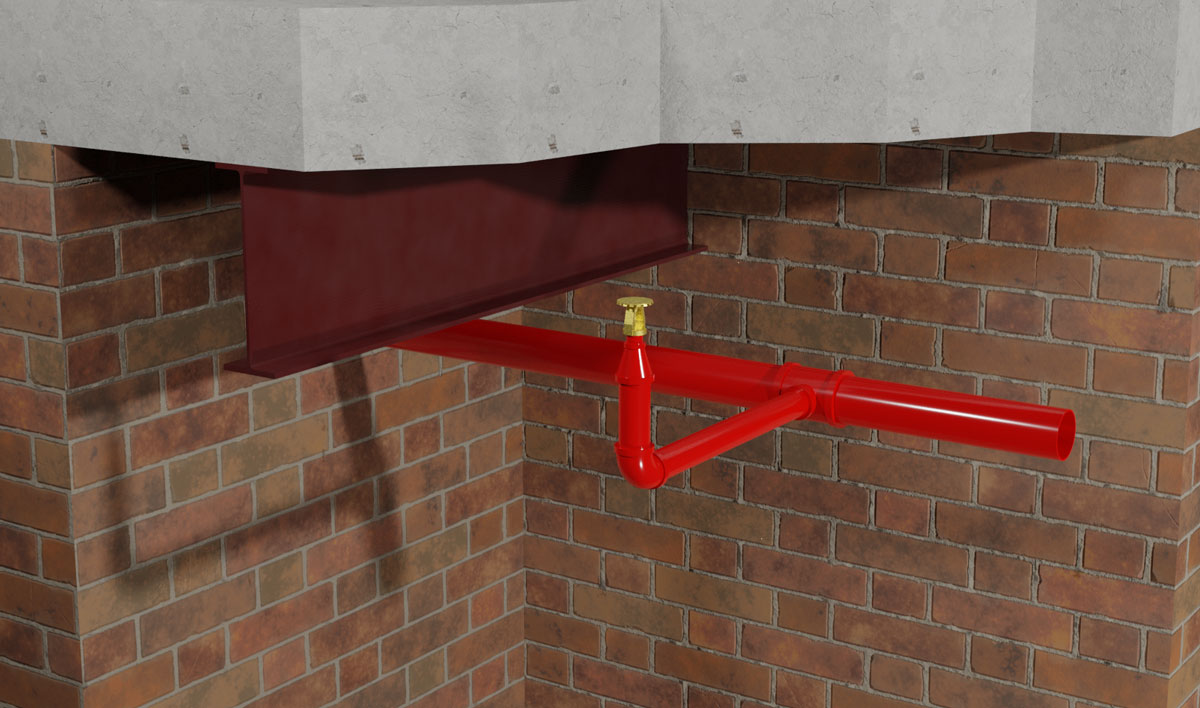While it is wise to assume that no architect designs a building with the expectation that it will go up in flames, it is also wise for the architect to incorporate sufficient fire protection into the building in order to compensate for such a tragic scenario.
It is critical, therefore, that defence mechanisms such as fire sprinklers and exit routes that reflect the design of the building are included at the design stage in order to make sure the people inside the building stay safe in the event of an emergency.
If the building you are working on is already completed, then you may be able to retrofit certain measures. All new building construction projects, however, should be using BIM in order to incorporate safety features from the start – not only to save time and money but more importantly lives.
How can BIM help with fire protection service planning then?
It can help you find the most efficient route for fire safety
Properly planned fire safety measures will take into account the size, layout, use and typical occupancy of a building, which will then determine the most effective measures that should be taken in order to minimise human risk. The outcome of this will mean that occupants of the building are able to stay safe for the longest period of time before the emergency services can get there. The key requirements here then will be the incorporation of high-capacity escape routes that are easy to find, and also the installation of methods to limit the size and spread of fire so that people can exit the building quickly and safely while the integrity of the building is retained.
BIM encourages collaboration and communication
Using BIM on a construction project encourages every different party involved to communicate and collaborate – from building managers and contractors to engineers and site inspectors. Everyone involved in the project will clearly understand how all of the different aspects of the building interact, and how it all comes together into one cohesive whole.
BIM not only helps make spatial coordination simple, but it can also determine what the most efficient distribution of fire defences will be in order to ensure maximum safety while allowing for cost-effectiveness to be taken into account as well. The BIM model can be fed with information about how real fires behave and how real buildings react to fire, in order to more accurately decide where emergency doors, fire alarm control panels, smoke detectors and sprinkler networks should be located.
BIM can help with costings and estimating
BIM is useful from a 3D point of view, as it will not only help you to manage the spatial planning of a building, but it can also help you with cost-estimating and sticking to your budget as it will reduce the amount of speculation included in a project and keep estimates of costs tight.
A BIM model can be updated from anywhere – an office or on-site anywhere in the world, and so any new information can be added immediately, to ensure the most accurate data is available at all times – improving both collaboration and transparency.
All of this information can then be shared easily between building managers, designers, installers and inspectors without any loss of knowledge, and so it can also really help with insurance valuations as well.
Helps with ongoing fire safety compliance
Fire safety is not a one-off task, it is an ongoing requirement. The Regulatory Reform (Fire Safety) Order 2005 states that once construction of a building is completed, the responsibility for the building is then passed to the building operator.
Whether the building operator is the owner or manager of the building, they must undertake a detailed fire risk assessment of the building on a routine basis, including identifying safe procedures and exit routes. The 3D BIM Model provides them with a great place to store all of this data, meaning it can be quickly referred to when new management takes over or if the fire service wants to see it.
As you can see, BIM provides a tool that businesses can use to help them deliver a reliable and cost-effective construction project, while managing stakeholder expectations and fostering a culture of collaboration for a safer working environment.
If you would like to find out more about The CAD Room’s BIM services including our Fire Protection Services, then please get in touch.

